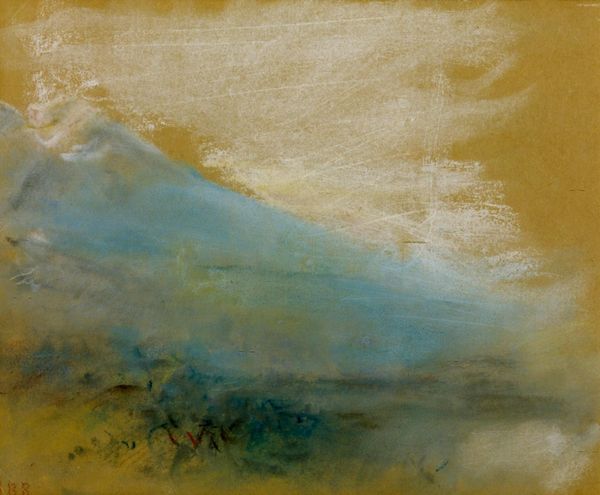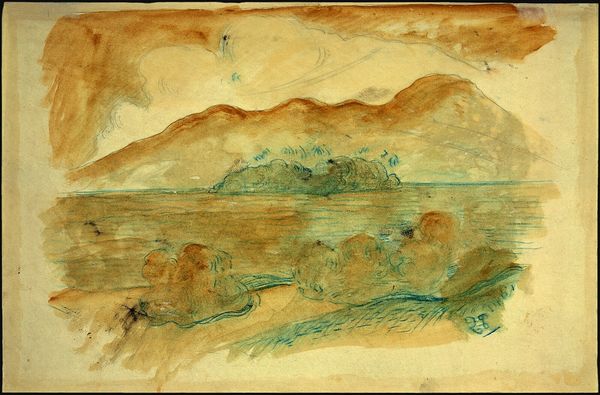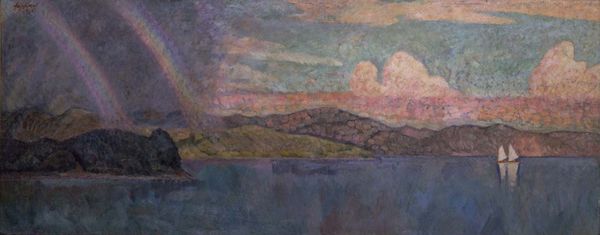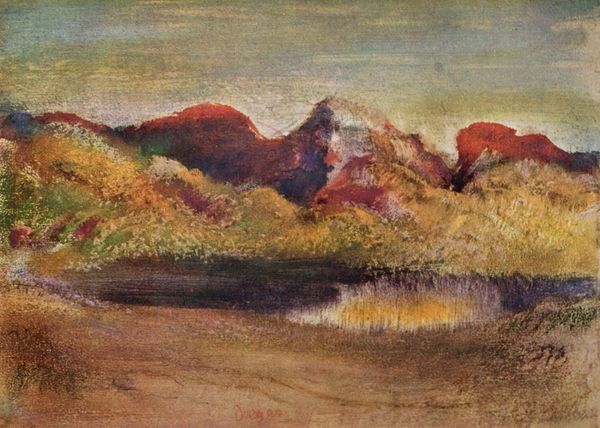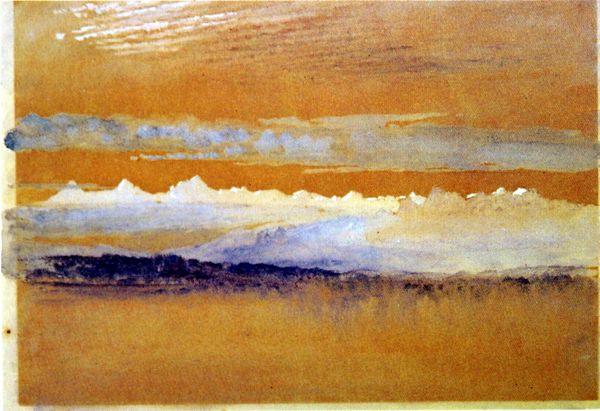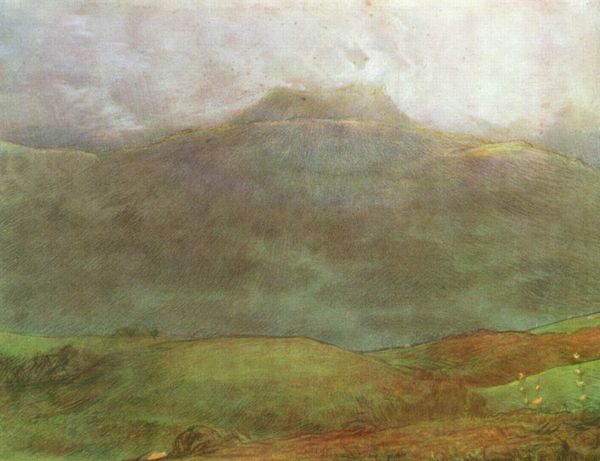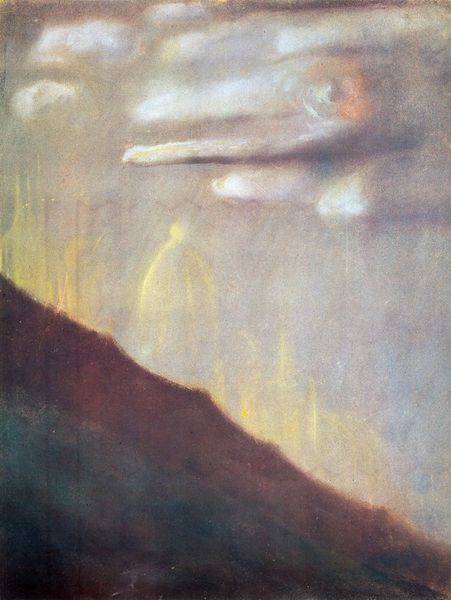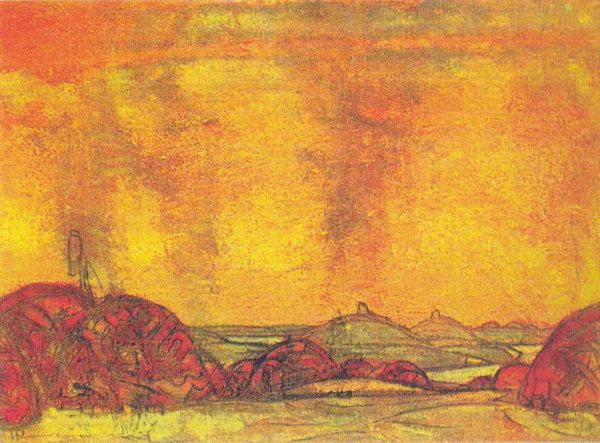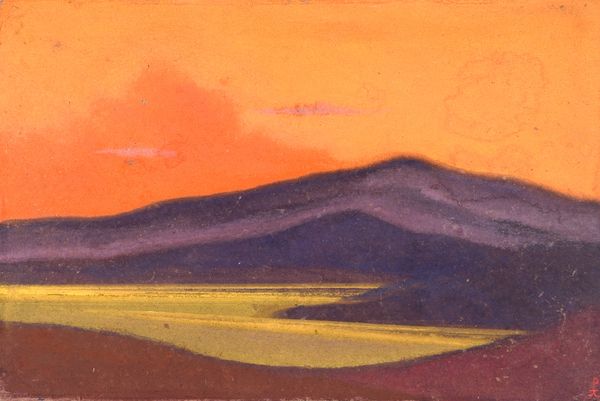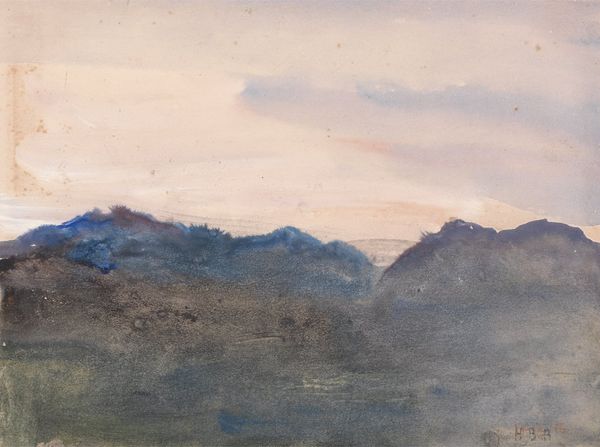
Dimensions: 25 x 30 cm
Copyright: Public domain
Editor: So, this is Degas’ "Vesuvius," painted in 1892. It's a watercolor, and honestly, it strikes me as a pretty ominous scene. What do you see in this piece beyond the volcano itself? Curator: It's not just about the volcano, is it? It’s about power, both natural and social. I look at that plume of smoke and ash, and I consider the vulnerability of the people living in its shadow, the lives historically and repeatedly disrupted. Does this image perhaps resonate with current dialogues surrounding environmental justice and class disparity, given the populations often most impacted by natural disasters? Editor: That's a powerful way to frame it. I was mainly thinking of the visual drama of the scene. But you're right, the idyllic landscape belies the ever-present threat, almost like a visual metaphor for societal anxieties. Are you suggesting that Degas was intentionally making a social commentary? Curator: Perhaps not intentionally in the way we understand it today, but artists are products of their time. This painting emerged during a period of rapid industrialization and growing social inequalities. How might his awareness of these societal tensions, however subtle, be reflected in his choice of subject and its stark portrayal? Even his use of watercolor, a medium often associated with immediacy and transience, can be interpreted as reflecting the precariousness of life under the volcano. Does this new context change how you look at it now? Editor: Absolutely. Seeing it as more than just a landscape, as a commentary on vulnerability and power... it's given me a lot to think about. Thanks! Curator: And thank you for prompting a re-evaluation. It's a reminder that art is never truly finished; its meanings are always evolving in dialogue with the present.
Comments
No comments
Be the first to comment and join the conversation on the ultimate creative platform.
